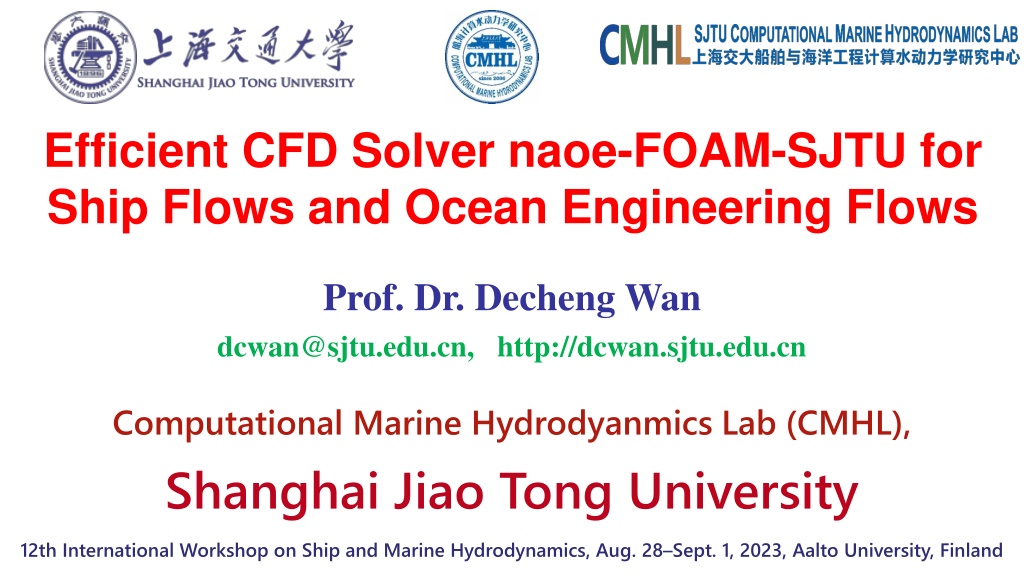Efficient CFD Solver for Ship and Ocean Engineering Flows
Computational Marine Hydrodynamics Lab (CMHL) at Shanghai Jiao Tong University specializes in developing advanced CFD solvers for ship and ocean engineering applications. They focus on research areas like ship hydrodynamics, ocean engineering, offshore wind turbine systems, and more. The lab works on High-performance computing, Fluid-structure interaction, and Exascale supercomputing capabilities to enhance their simulations. Their efforts contribute to the field of marine technology and engineering, aiming to improve efficiency and performance in maritime industries.
Download Presentation

Please find below an Image/Link to download the presentation.
The content on the website is provided AS IS for your information and personal use only. It may not be sold, licensed, or shared on other websites without obtaining consent from the author. Download presentation by click this link. If you encounter any issues during the download, it is possible that the publisher has removed the file from their server.
E N D
Presentation Transcript
Efficient CFD Solver naoe-FOAM-SJTU for Ship Flows and Ocean Engineering Flows Prof. Dr. Decheng Wan dcwan@sjtu.edu.cn, http://dcwan.sjtu.edu.cn Computational Marine Hydrodyanmics Lab (CMHL), Shanghai Jiao Tong University 12th International Workshop on Ship and Marine Hydrodynamics, Aug. 28 Sept. 1, 2023, Aalto University, Finland
Content Introduction of CMHL Development of CFD solvers Applications in Ship and Ocean Engineering Ship hydrodynamics Ocean engineering Offshore wind turbine system Conclusions and further works - - topic
Introduction of CMHL Computational Marine Hydrodynamics Lab (CMHL) was founded in 2006. CMHL has long been devoted to the following researches: Advanced CFD methods for marine hydrodynamics, Developments of CAE software and platform, Applications of CAE software for complex flows in the field of advanced and innovated ship, marine structures, offshore renewable energy, etc. - - topic
Content Introduction of CMHL Development of CFD solvers Applications in Ship and Ocean Engineering Ship hydrodynamics Ocean engineering Offshore wind turbine system Conclusions and further works - - topic
Development of SST-DES DES framework RANS Near wall region ? ?? ??? = 0 ???? DES ? ?? ??+? ?? ?? +? ?? ??? = 1 ? ? ??? ? ? ?? ??? ?? + ? ?? ??? ? ??? ??? LES After separation ? ?? ??? = 0 ??? +? ?? ?? ??? +? ?? ??? ? ?? ?? = 1 ? ? ??? ? ? ?? ??? ?? + ? ?? ? ??? ??? - - topic
Further Works High performance computing Full scale ship and ocean engineering flows Detailed description for multi-surface flows, breaking waves, cavitation and bubble flow Exascale supercomputing capability Fluid structure interaction High frequency vibrations associate with transient flow Flexibility for the fully coupled floating offshore wind turbine system - - topic
Thank You Thank You




























